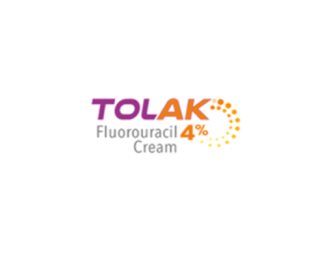A study to assess the efficacy of an emollient cream in reducing skin reactions of patients treated for their Actinic Keratosis with 5- fluorouracil 4% treatment
A study to assess the efficacy of an emollient cream in reducing skin reactions of patients treated for their Actinic Keratosis with 5- fluorouracil 4% treatment

Frequency and Intensity of local reactions in patients treated with 4% 5-FU vs 4% 5-FU associated with an emollient cream: a randomised, controlled clinical trial
How is the study conducted?
This study has to recruit 145 European participants from France, Germany, Italy and Spain with actinic keratosis lesions on their face, and/or ears and/or scalp. The total duration of the study for each participant is 8 weeks including 4 visits (inclusion visit, Week 2, Week 4 and Week 8).
This study is randomised, meaning that participants are assigned to one of the treatment groups using an element of chance. The randomisation ratio is 1:1, which means that participant has the same probability to receive 5-fluorouracil 4% with an emollient cream than 5-fluorouracil 4% only.
The schema summarizes the information presented above:

Who can take part in the trial ?
To be part of the trial, participant must fulfill several conditions including the following:
• The participant is at least 18 years old
• The participant has a clinical diagnosis of actinic keratosis (AK).
• The participant is harboring 5 or more clinically recognizable (palpable and/or visible to unaided eye) AK lesions of the face, and/or ears and/or scalp.
• AK lesions of the treated area are not cancerous
• The participant does not present important local skin reactions before treatment initiation
What are the objectives of the trial and how are they evaluated ?
The primary objective is to compare the Local Skin Reaction score (LSR score) on the area treated at the end of 4-weeks therapy between the group of patients having received 5-fluorouracil 4% associated with an emollient cream (called the intervention group) and the group of patients having received 5-fluorouracil 4% only (called the control group).
The LSR score includes the evaluation of 6 usual types of skin reactions:
- erythema (the redness of the skin),
- erosion and ulceration (losses of superficial parts of the skin that can lead to a sore),
- swelling (skin oedema),
- crusting,
- flaking and scaling (related to an excessive dryness of the skin),
- vesiculation and pustulation (appearance of small blisters filled with fluid).
The score is assessed by the doctor and ranges from 0 (absence of skin reaction) to a maximum of 24 (maximal severity for all types of reactions).
In addition, secondary objectives of the trial include:
• A comparison of the local skin reaction during 5-fluorouracil 4% treatment course between patients with and without emollient cream based on the patients' self-evaluations (subjective symptoms).
• A comparison of the tolerability to 5-fluorouracil 4% therapy between patients with and without emollient cream. The tolerability is assessed regarding proportion of patients who stopped their treatment prematurely due to a side effect related to local skin reactions.
• A comparison of the clinical response to 5-fluorouracil 4% therapy between patients with and without emollient cream. The clinical response is assessed regarding the evolution of number of AK lesions from trial entry to 4 weeks after the end of the therapy.
What is the study Medication ?
Both study products are approved and marketed in countries of Europe. 5-fluorouracil 4% (Tolak®) is a cream indicated in adults for the topical treatment of non-hyperkeratotic, non-hypertrophic actinic keratosis lesions on the face and/or ears and/or scalp.
Dexeryl® is an emollient cream containing glycerol, vaseline and paraffin, marketed as a non-medicinal treatment for signs and symptoms of skin dryness in various skin diseases.
Participants receive:
• Either 5 fluorouracil 4% (Tolak®) associated with the emollient cream (Dexeryl®) for 8 weeks,
• Or 5 fluorouracil 4% only.
5 fluorouracil 4% cream was to be applied once daily in the evening for 4 weeks
Emollient cream was to be applied once daily in the morning for 8 weeks.
